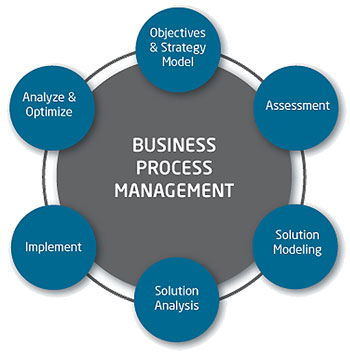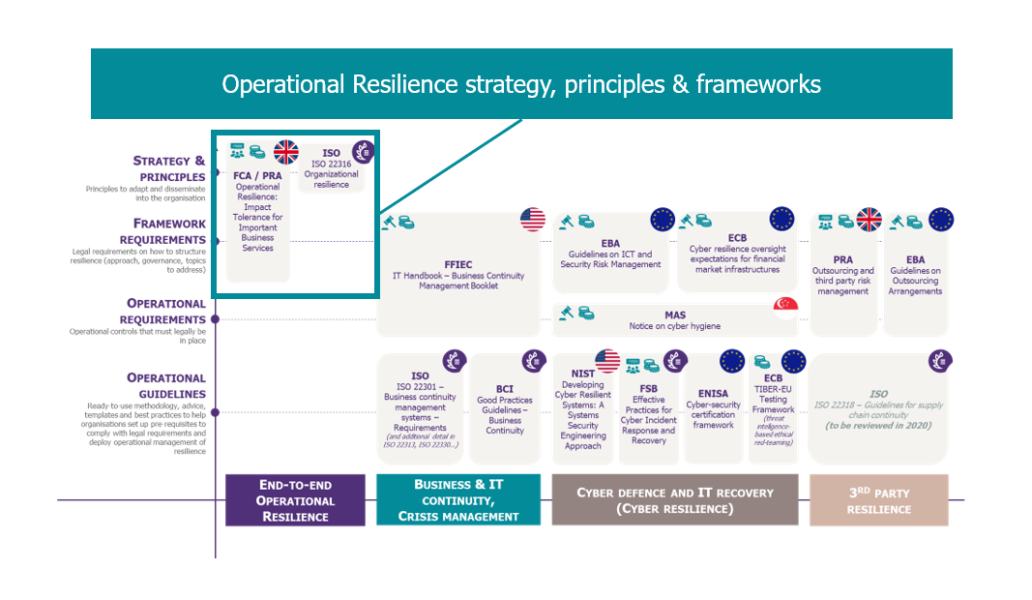Introduction: The Imperative of Business Resilience Strategies
In an ever-evolving business landscape, resilience has become a crucial factor for sustainability and success. This article explores the significance of business resilience strategies and how organizations can proactively navigate challenges, ensuring their ability not only to survive but thrive in the face of adversity.
Understanding Business Resilience: Beyond Survival Mode
Business resilience goes beyond mere survival; it involves a proactive and adaptive approach to challenges. Instead of merely bouncing back from disruptions, resilient businesses anticipate, prepare for, respond to, and adapt swiftly to changes. Understanding this broader concept is the first step towards building a robust and enduring organizational framework.
Risk Assessment and Mitigation: Identifying Potential Threats
An integral component of business resilience is a comprehensive risk assessment. Organizations need to identify potential threats, both internal and external, that could impact their operations. This includes economic downturns, supply chain disruptions, cybersecurity threats, and unforeseen events. By recognizing these risks, businesses can develop effective mitigation strategies.
Diversification Strategies: Building a Robust Portfolio
Diversification is a key element in enhancing business resilience. This applies not only to product or service offerings but also to customer segments, geographic markets, and supply chains. A diversified portfolio helps businesses weather uncertainties in specific sectors or markets, reducing vulnerability to shocks in any single area.
Agile Leadership: Navigating Uncertainties with Flexibility
In times of crisis, agile leadership becomes a linchpin for business resilience. Leaders need to foster a culture of adaptability, encourage innovation, and make decisions swiftly. A flexible leadership approach enables organizations to pivot when necessary and navigate uncertainties with resilience and confidence.
Investing in Technology: The Role of Digital Transformation
Digital transformation is a potent tool for building business resilience. Embracing technology not only improves operational efficiency but also equips organizations to adapt quickly to changing circumstances. Cloud computing, data analytics, and automation are among the technological foundations that enhance organizational agility and resilience.
Employee Well-being: The Heart of Resilient Organizations
A resilient organization prioritizes the well-being of its employees. Employee morale, mental health, and a sense of belonging contribute to a resilient workforce. By fostering a supportive workplace culture, providing resources for mental health, and ensuring transparent communication, businesses can enhance employee resilience and, in turn, the overall organizational resilience.
Supply Chain Optimization: Building End-to-End Resilience
The COVID-19 pandemic highlighted the vulnerabilities in global supply chains. Business resilience strategies involve optimizing supply chains for efficiency and resilience. This may include diversifying suppliers, leveraging technology for real-time tracking, and developing contingency plans to address disruptions swiftly and minimize their impact.
Financial Preparedness: Building a Cushion for Uncertain Times
Financial resilience is a cornerstone of overall business resilience. Organizations need to maintain a healthy cash flow, strategically manage debt, and have contingency funds in place. This financial preparedness provides a cushion during economic downturns or unexpected disruptions, allowing businesses to weather storms with greater stability.
Collaborative Ecosystems: Strength in Unity
Building resilience goes beyond individual organizations. Collaborative ecosystems and partnerships contribute to collective resilience. Sharing resources, information,
 Get ideas for companies to begin and for tactics to increase your small enterprise with new products and services. When you’re nonetheless stuck on enterprise ideas that you would be able to launch while working full-time, listed here are 25 potentialities to assist get you began. It is not always highly profitable but when you can efficiently source merchandise to promote or have a variety of unused objects in your home then this could be a fantastic enterprise concept for you.
Get ideas for companies to begin and for tactics to increase your small enterprise with new products and services. When you’re nonetheless stuck on enterprise ideas that you would be able to launch while working full-time, listed here are 25 potentialities to assist get you began. It is not always highly profitable but when you can efficiently source merchandise to promote or have a variety of unused objects in your home then this could be a fantastic enterprise concept for you.








.jpg/220px-NYU_Stern_School_of_Business_-_Henry_Kaufman_Management_Center_(48072761732).jpg) Car accidents can happen anywhere and to anyone. Even experienced drivers with good driving records are at risk of an accident so it makes sense to make sure you are completely protected in the event you are in a car accident. Today, more insurance companies are including accident forgiveness in their car insurance policies. The idea of including this type of protection is to make the policy more attractive to potential customers. Some companies charge a nominal fee for the program while others offer it for free. Because accident forgiveness is now just becoming more widespread across insurance companies, many people do not know how accidental forgiveness works.
Car accidents can happen anywhere and to anyone. Even experienced drivers with good driving records are at risk of an accident so it makes sense to make sure you are completely protected in the event you are in a car accident. Today, more insurance companies are including accident forgiveness in their car insurance policies. The idea of including this type of protection is to make the policy more attractive to potential customers. Some companies charge a nominal fee for the program while others offer it for free. Because accident forgiveness is now just becoming more widespread across insurance companies, many people do not know how accidental forgiveness works.
 Order high security business checks online from Costco Checks. Just as essential as personalization is the peace of thoughts you will expertise understanding that your corporation checks will probably be ordered safely. Choose from high safety enterprise checks, desk checks, payroll checks and extra in quite a lot of sizes.
Order high security business checks online from Costco Checks. Just as essential as personalization is the peace of thoughts you will expertise understanding that your corporation checks will probably be ordered safely. Choose from high safety enterprise checks, desk checks, payroll checks and extra in quite a lot of sizes.


 Simply order and re-order private and business checks utilizing Vistaprint’s secure encryption platform. The Analyzed Enterprise account receives an earnings credit to offset some or all of the monthly service charge based on the average investable steadiness within the account. Yahoo presents you a variety of products and services for little or no price. This account type is greatest suited to small to mid-dimension businesses with decrease monthly deposits and activity.
Simply order and re-order private and business checks utilizing Vistaprint’s secure encryption platform. The Analyzed Enterprise account receives an earnings credit to offset some or all of the monthly service charge based on the average investable steadiness within the account. Yahoo presents you a variety of products and services for little or no price. This account type is greatest suited to small to mid-dimension businesses with decrease monthly deposits and activity.

 When selecting a enterprise concept, focus on your strengths and skills. Each ideas will take hard work and several other years to take off, which makes them interesting as you maintain down your current full-time place. A popular industry that girls are becoming increasingly more concerned in is software program improvement, you probably have an idea for a bit of software program or a cellular app then why not learn to create it and profit out of your creativity.
When selecting a enterprise concept, focus on your strengths and skills. Each ideas will take hard work and several other years to take off, which makes them interesting as you maintain down your current full-time place. A popular industry that girls are becoming increasingly more concerned in is software program improvement, you probably have an idea for a bit of software program or a cellular app then why not learn to create it and profit out of your creativity.

 When using credit cards or store cards, chances are, the user incurs mounting interests on these cards on top of their debts. That is why, while convenience is tops when using these plastic cards, chances are they ultimately ruin the life of the user just because it leaves him piled up in debts.
When using credit cards or store cards, chances are, the user incurs mounting interests on these cards on top of their debts. That is why, while convenience is tops when using these plastic cards, chances are they ultimately ruin the life of the user just because it leaves him piled up in debts.


 I’m the first to admit that housekeeping isn’t my forte. I love it when my home is fresh and sparkling, but I loathe the process of house cleaning. To be honest, I don’t understand people like my friend Kristie, who says that cleaning is therapeutic and relieves stress. Granted, I feel a bit stressed when my house is messy, but the dread of getting out the buckets and cleansers trumps any discomfort I may have. The result? I probably put more energy into feeling bad about my situation than it would take to actually clean the house.
I’m the first to admit that housekeeping isn’t my forte. I love it when my home is fresh and sparkling, but I loathe the process of house cleaning. To be honest, I don’t understand people like my friend Kristie, who says that cleaning is therapeutic and relieves stress. Granted, I feel a bit stressed when my house is messy, but the dread of getting out the buckets and cleansers trumps any discomfort I may have. The result? I probably put more energy into feeling bad about my situation than it would take to actually clean the house.
 So, you have some money burning a hole in your pocket. What you want to know is how do you play the money game to win? I mean really win. Like become a millionaire kind of win without the hype, the realest investments and the other late-night infomercial programs you’ve seen.
So, you have some money burning a hole in your pocket. What you want to know is how do you play the money game to win? I mean really win. Like become a millionaire kind of win without the hype, the realest investments and the other late-night infomercial programs you’ve seen.



 Start an internet enterprise right this moment! When you have particular experience engaged on home equipment reminiscent of washers, dryers and dishwashers, this might be a better enterprise idea for you. After I set out to start in on a new enterprise concept, I always make certain it aligns with both my core competencies and my interests.
Start an internet enterprise right this moment! When you have particular experience engaged on home equipment reminiscent of washers, dryers and dishwashers, this might be a better enterprise idea for you. After I set out to start in on a new enterprise concept, I always make certain it aligns with both my core competencies and my interests.

 Select from over 3500 verify products. Our Regular Business Checking Account is perfect for the growing enterprise with moderate activity. Yahoo strives to attach you with the products, providers, and businesses you’re in search of. Select your Business Checks by Design. Learn extra about Deluxe marketing companies and checks right here.
Select from over 3500 verify products. Our Regular Business Checking Account is perfect for the growing enterprise with moderate activity. Yahoo strives to attach you with the products, providers, and businesses you’re in search of. Select your Business Checks by Design. Learn extra about Deluxe marketing companies and checks right here.




 Do you know you’ll be able to refine a search by telling Yahoo to look for sure types of content material? Supply – Select to look your favourite recipe web site’s content material. We’ve nearly 25 colours of business checks to pick out – with no further payment for premium” colours or types. We guarantee your checks will meet or exceed trade financial institution processing standards, together with Verify 21 rules.
Do you know you’ll be able to refine a search by telling Yahoo to look for sure types of content material? Supply – Select to look your favourite recipe web site’s content material. We’ve nearly 25 colours of business checks to pick out – with no further payment for premium” colours or types. We guarantee your checks will meet or exceed trade financial institution processing standards, together with Verify 21 rules.


 20 Small Enterprise Ideas within the Philippines for 2018 Manny January 08, 2018 241 Feedback Making a living within the Philippines might be arduous in case you are solely wanting in a single direction, and that is, employment. Investment: You’ll be able to maintain your startup prices decrease by operating from your private home and starting with half-time hours. From inspiration on beginning a enterprise to learning extra about how one can find options – make our website yours and by no means miss a beat.
20 Small Enterprise Ideas within the Philippines for 2018 Manny January 08, 2018 241 Feedback Making a living within the Philippines might be arduous in case you are solely wanting in a single direction, and that is, employment. Investment: You’ll be able to maintain your startup prices decrease by operating from your private home and starting with half-time hours. From inspiration on beginning a enterprise to learning extra about how one can find options – make our website yours and by no means miss a beat.
 …
…


 Choose from over 3500 check merchandise. QuickBooks Checks: Spend less time printing checks and extra time working your corporation. If you search the Net utilizing Yahoo, content on the Search Results Page comes from a wide range of sources. CheckAdvantage, your online business examine expert online.
Choose from over 3500 check merchandise. QuickBooks Checks: Spend less time printing checks and extra time working your corporation. If you search the Net utilizing Yahoo, content on the Search Results Page comes from a wide range of sources. CheckAdvantage, your online business examine expert online.
 Begin a web based business immediately! Create ridiculous startup merchandise utilizing a database of ideas, randomised towards numerous useful metrics. Enterprise professionals from any business can start a facet hustle that would turn right into a full-time freelance profession. After reading an article on Smallstarter about how one can find a lucrative enterprise idea , Janet has decided to turn her bead making passion into a business.
Begin a web based business immediately! Create ridiculous startup merchandise utilizing a database of ideas, randomised towards numerous useful metrics. Enterprise professionals from any business can start a facet hustle that would turn right into a full-time freelance profession. After reading an article on Smallstarter about how one can find a lucrative enterprise idea , Janet has decided to turn her bead making passion into a business.
 Looking for a creative, ‘outside the box’ Canadian business financing solution? You may have investigated factoring receivables already but either didn’t understand how accounts receivable financing works, or, probably more to the point weren’t comfortable with how it works for your firm on a daily basis.
Looking for a creative, ‘outside the box’ Canadian business financing solution? You may have investigated factoring receivables already but either didn’t understand how accounts receivable financing works, or, probably more to the point weren’t comfortable with how it works for your firm on a daily basis.

 When financing a new or used vehicle, the finance company in charge of the loan will require the purchaser to obtain comprehensive and collision coverage for the life of the loan. This is done to ensure payment is received in the case of a total loss, since the alternative would be for the auto purchaser to continue monthly payment installments even after the event of a total loss. It can be difficult for a finance company to ensure payments after the vehicle has been totaled, as they can no longer repossess the vehicle. Therefore, in order to protect from financial loss, finance companies will institute forced coverage on a loan if insurance coverage lapses.
When financing a new or used vehicle, the finance company in charge of the loan will require the purchaser to obtain comprehensive and collision coverage for the life of the loan. This is done to ensure payment is received in the case of a total loss, since the alternative would be for the auto purchaser to continue monthly payment installments even after the event of a total loss. It can be difficult for a finance company to ensure payments after the vehicle has been totaled, as they can no longer repossess the vehicle. Therefore, in order to protect from financial loss, finance companies will institute forced coverage on a loan if insurance coverage lapses.



 The prospect of traveling, whether within the country or abroad, can be very exciting. There are so many places to go and things to do! It’s a little easy to get carried away with planning events and there may be a need to adjust the budget a time or two accordingly. When preparing for travel, it is wise to keep in mind ways to keep the costs down. There are many ways to decrease expenses and have a pleasant trip.
The prospect of traveling, whether within the country or abroad, can be very exciting. There are so many places to go and things to do! It’s a little easy to get carried away with planning events and there may be a need to adjust the budget a time or two accordingly. When preparing for travel, it is wise to keep in mind ways to keep the costs down. There are many ways to decrease expenses and have a pleasant trip.

